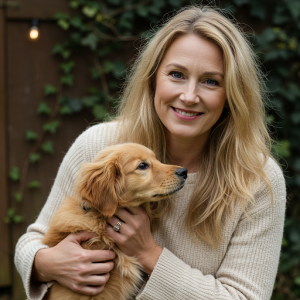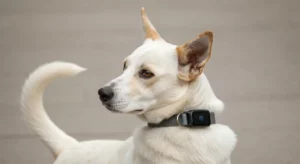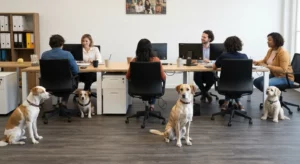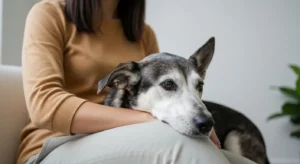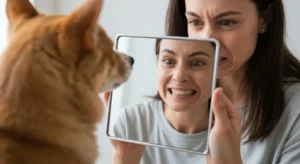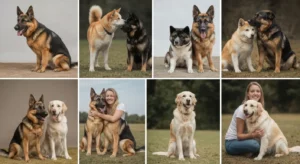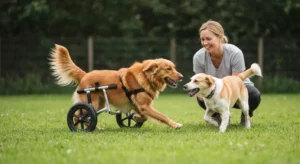July 31, 2025
The silence was the first thing that hit me. Not the happy, sleepy silence of a contented dog, but a heavy, charged silence that makes the hair on your arms stand up. I pushed open the door to my apartment, my keys still in hand, and my heart sank into my shoes. It looked like a blizzard had hit my living room. A snowstorm of stuffing, foam, and shredded fabric covered every surface. In the center of the devastation sat Leo, my sweet, goofy two-year-old rescue mutt, trembling, panting, and covered in his own drool.
This wasn’t the first time. It started with a chewed-up shoe, which I chalked up to puppy-like behavior. Then came the scratch marks on the doorframe. Then a note from my neighbor about incessant, mournful howling the moment my car pulled away. But this—the complete and utter destruction of a brand-new armchair—was a cry for help. It wasn’t bad behavior. It wasn’t spite. It was sheer, unadulterated panic. And as I sank to my knees to comfort a dog who was clearly traumatized, I knew I was completely out of my depth.
Leo had what I would soon learn is a classic, severe case of separation anxiety. My leaving wasn’t just an inconvenience for him; it was a five-alarm fire in his brain, a deeply rooted fear that I was gone forever. That day, sitting amidst the fluff of my former furniture, I made a promise to him and to myself: we were going to fix this, no matter what it took. This is the story of how we did it.
The Diagnosis: More Than Just Bad Behavior
My first call was to my veterinarian. Before diving into behavioral solutions, it’s critical to rule out any underlying medical issues that could be causing distress. Pain, thyroid problems, or other conditions can manifest as anxiety. After a thorough check-up, my vet confirmed Leo was in perfect physical health. She then looked at me with kind, knowing eyes and said the words that changed everything: “He’s not giving you a hard time; he’s having a hard time.”
She explained that separation anxiety in dogs is a genuine panic disorder, much like those experienced by humans. It’s triggered by being left alone or separated from their primary attachment figure. The destructive behavior, the howling, the pacing—they are all external symptoms of an internal terror. Punishment would only make it worse by adding fear of me to his fear of being alone.
This reframe was my first major breakthrough. I stopped seeing a “bad dog” and started seeing a scared dog who needed my help to feel safe. My vet gave me the number of a Certified Applied Animal Behaviorist (CAAB) and advised me to start a journey of management, modification, and most of all, patience.
Expert Tip: Start with Your Vet.
Before you label your dog’s behavior as separation anxiety, schedule a full check-up with your veterinarian. It’s essential to rule out any medical causes for the distress. Your vet is also your best first resource for recommendations to qualified trainers, behaviorists, or veterinary behaviorists who specialize in anxiety disorders.
Step 1: Operation Desensitization and Counter-Conditioning
The behaviorist explained our mission in two fancy-sounding but surprisingly simple terms: desensitization and counter-conditioning. In short, we had to slowly get Leo used to the idea of being alone (desensitization) while simultaneously changing his emotional response from panic to calm (counter-conditioning).
The first step was identifying his triggers. For Leo, it was a predictable sequence: me putting on my work shoes, picking up my keys, and grabbing my laptop bag. These simple actions were like a giant warning siren that screamed, “ABANDONMENT IMMINENT!”
So, we started to make those cues meaningless. Several times a day, I’d put on my shoes… and then just sit down on the couch to read a book. I’d jingle my keys… and then go to the kitchen to get a glass of water. I’d pick up my bag, walk to the door, touch the doorknob… and then turn around and put the bag down. At first, Leo would follow me, panting and whining with every step. But after days of this routine, he started to get bored. The “sirens” were no longer reliable predictors of my departure. He’d lift his head, see me with my keys, and then let out a sigh and put his head back down. It was a tiny victory, but it felt monumental.
Next came the counter-conditioning. The goal was to make my departure the best part of his day. The behaviorist advised me to find a “high-value” food item that Leo would only get when I was leaving. For him, this was a frozen Kong stuffed with a mixture of peanut butter, plain yogurt, and his favorite kibble. It was doggy nirvana.
What I Learned: Break the Panic Cycle.
Desensitization: Systematically expose your dog to their departure triggers in such a low-intensity way that they don’t react. Pick up your keys, put them down. Put on your coat, take it off. Do this dozens of times until the cues no longer cause anxiety.
Counter-Conditioning: Change your dog’s emotional association with your departure from negative to positive. Use a special, irresistible treat (like a frozen food puzzle) that they only get when you are about to leave.
Step 2: Baby Steps Out the Door (Literally)
With the triggers less potent and a Kong ready to go, it was time to practice actual departures. This is where my patience was tested to its limits. This process cannot be rushed. Rushing it sets your dog up for failure and reinforces their panic.
I bought a cheap pet camera so I could monitor his reaction in real-time on my phone. This was non-negotiable; I had to know the second he started showing signs of stress so I could return before he went into a full-blown panic.
Our first “departure” lasted for one second. I gave Leo his Kong, said a calm “I’ll be back,” walked out the door, closed it, and immediately walked back in. He was so engrossed in his treat he barely noticed.
We did this over and over, slowly increasing the duration. Five seconds. Ten seconds. Thirty seconds. A minute. If I saw on the camera that he stopped eating the Kong and started looking for me, I knew I had pushed it too far. The next day, we’d go back to a shorter duration where he was successful. It was a tedious dance: two steps forward, one step back. Some days, we could barely manage 30 seconds. Other days, we’d hit a new record of three minutes. During this entire period—which lasted for weeks—I did not leave him alone for longer than he could handle. I worked from home, enlisted friends, and used a doggy daycare. It was a huge commitment, but it was the only way to prevent him from rehearsing his panic.
Step 3: Creating a Safe Haven, Not a Prison
Many people suggest crate training, and it can be a lifesaver for separation anxiety in dogs, but only if the dog perceives the crate as a safe, wonderful den. My first attempt at this was a disaster. I bought a crate, threw a blanket in, and tried to lure him in. He wanted nothing to do with it. Trying to force it would have made it a punishment box.
So, we started from scratch. I put the crate in the living room and left the door open. I started feeding him all his meals inside it. I would randomly toss super high-value treats into the back of the crate for him to discover. I never, ever closed the door. Soon, I’d find him napping in there on his own. The crate had become *his* space.
Only then did we start practicing closing the door for a few seconds at a time while I was right there, rewarding him with treats for his calm behavior. Over time, the crate became his Kong-eating spot during my practice departures. It was his safe zone, a place where he knew only good things happened.
Expert Tip: Crate Training Must Be Positive.
A crate should be a sanctuary, not a jail. Never use it for punishment. Make it the best place in the house by feeding all meals there, providing special toys that are only available in the crate, and never forcing your dog inside. The goal is for your dog to choose to go in on their own to rest.
Step 4: Fostering Independence and Confidence
The behaviorist pointed out something I hadn’t considered: part of Leo’s problem was that we were together 24/7 when I was home. He was a true “velcro dog,” following me from room to room. He didn’t know how to just be by himself. He lacked independence.
We started working on building his confidence when I was home. I taught him a solid “place” command, sending him to his bed with a chew toy while I worked in another room. At first, he’d pop right back up and follow me. But with consistency, he learned to settle on his own for longer periods.
We also ramped up his mental and physical exercise. A tired, mentally stimulated dog is a less anxious dog. Our morning walks became “sniffaris,” where I let him lead the way and sniff to his heart’s content. We played nose work games in the house, hiding treats for him to find. A 15-minute training session practicing basic commands did more to tire him out than a 30-minute run.
What I Learned: A Confident Dog is a Calm Dog.
Encourage independence even when you’re home. Teach a solid “place” or “stay” command so your dog learns to relax on their own. Increase mental enrichment with puzzle toys, nose work games, and training sessions. A dog whose mind is engaged is less likely to fixate on your absence.
The Breakthrough and Our New Normal
After about three months of intense, consistent work, the breakthrough happened. I was practicing a 20-minute departure. I gave Leo his Kong in his crate, left the house, and drove around the block. I pulled up the pet cam feed on my phone, my breath held. I watched him diligently work on his Kong for about 15 minutes. When he finished, he licked his lips, let out a big sigh, curled up, and went to sleep.
I almost burst into tears. There was no pacing, no whining, no howling. Just a calm, contented dog, secure in the knowledge that his world was safe and that I would, eventually, come back.
Today, two years later, our life is completely different. Leo is no longer on a strict training protocol, but the principles have become part of our routine. He still gets a special puzzle toy when I leave for work. Our morning walks are still focused on enrichment. He can now comfortably handle a full workday alone, and the pet cam shows him spending most of it sleeping soundly.
Curing Leo’s separation anxiety was one of the hardest things I’ve ever done. It required a huge investment of time, money, and emotional energy. But the bond we built and the peaceful, confident dog he has become was worth every single second. If you are in the depths of this struggle, please know you are not alone, and it is not hopeless. It takes a plan, professional guidance, and a mountain of patience, but you can give your dog the greatest gift of all: the feeling of being safe, even when they’re on their own.


